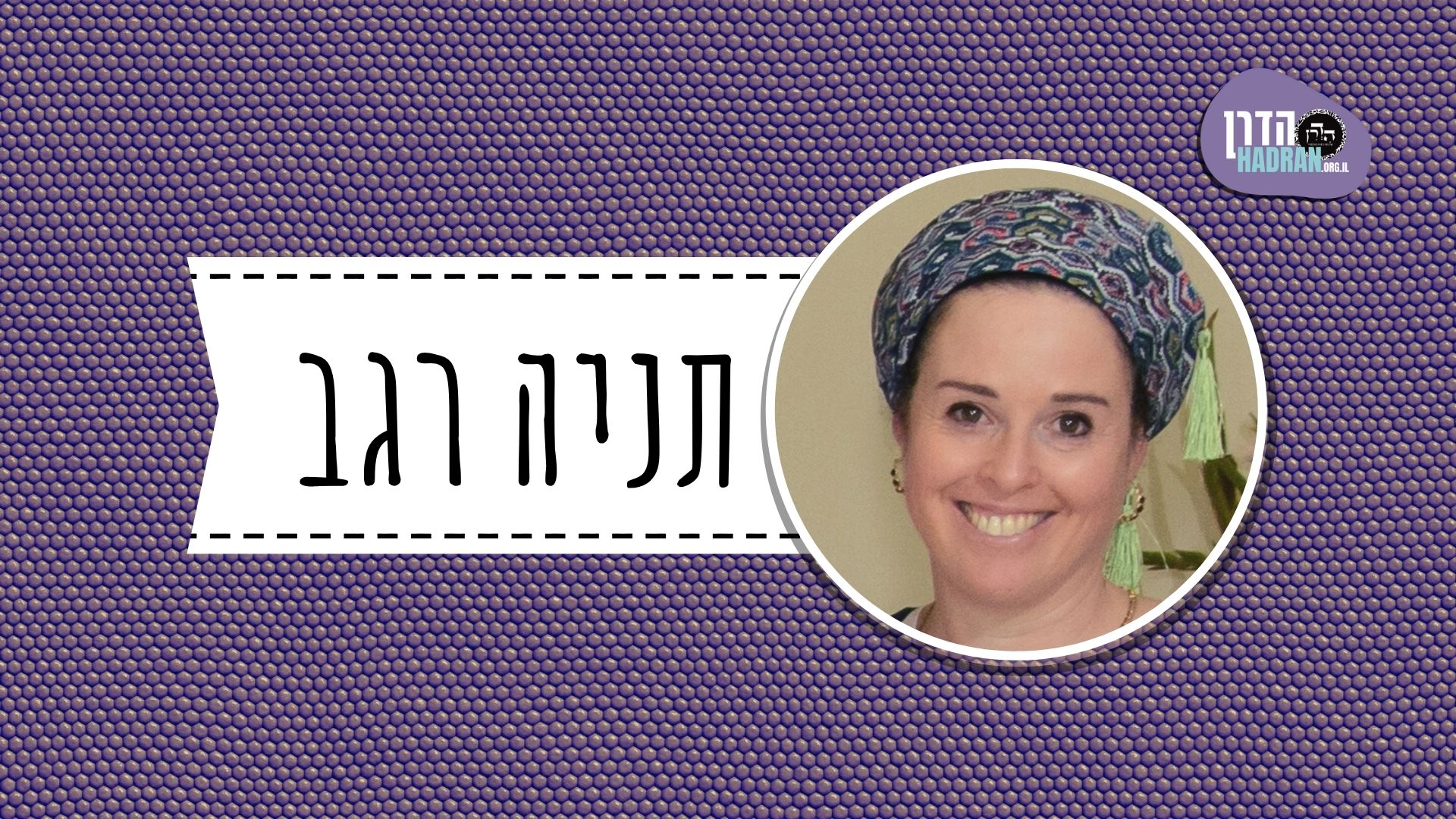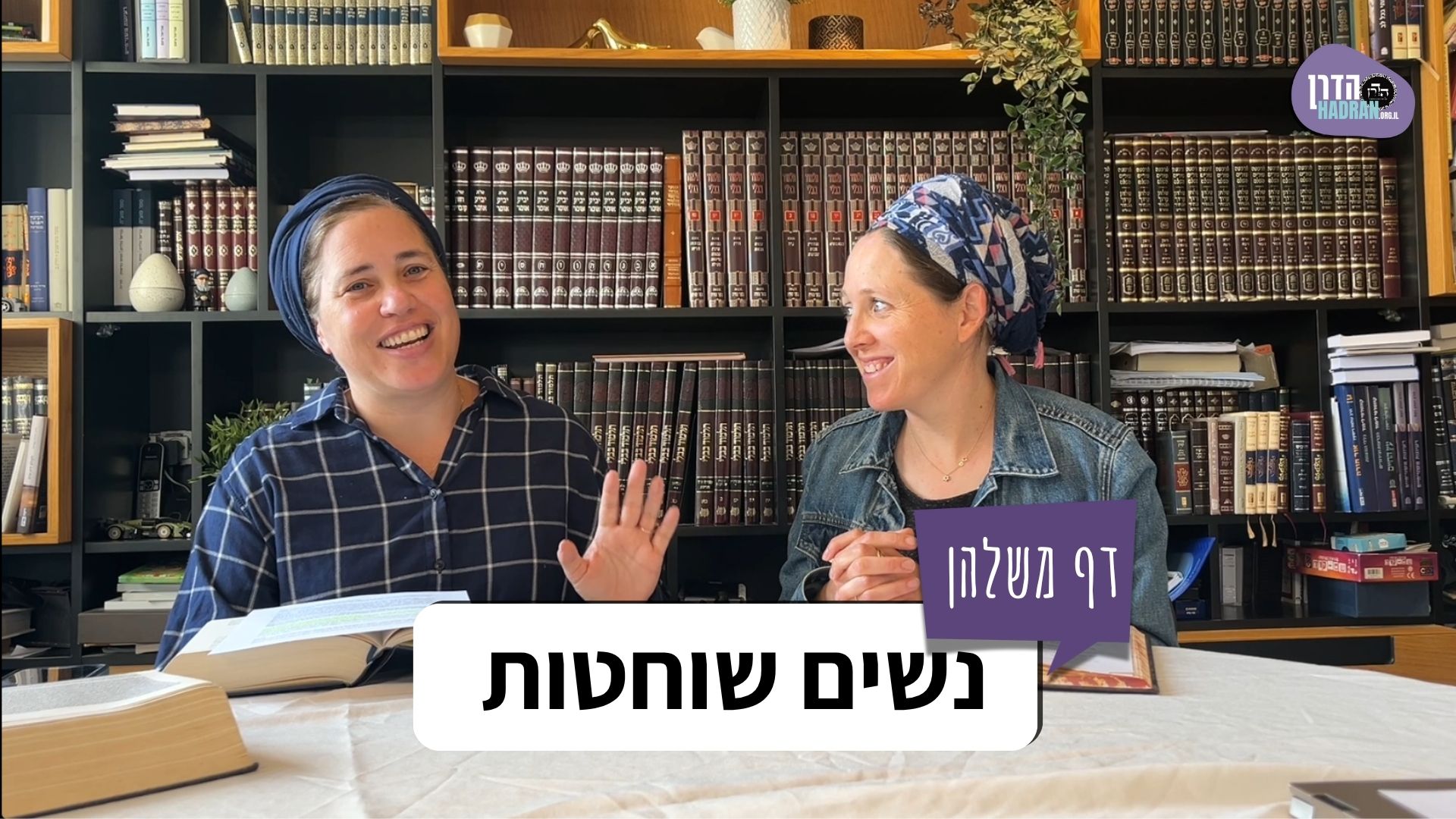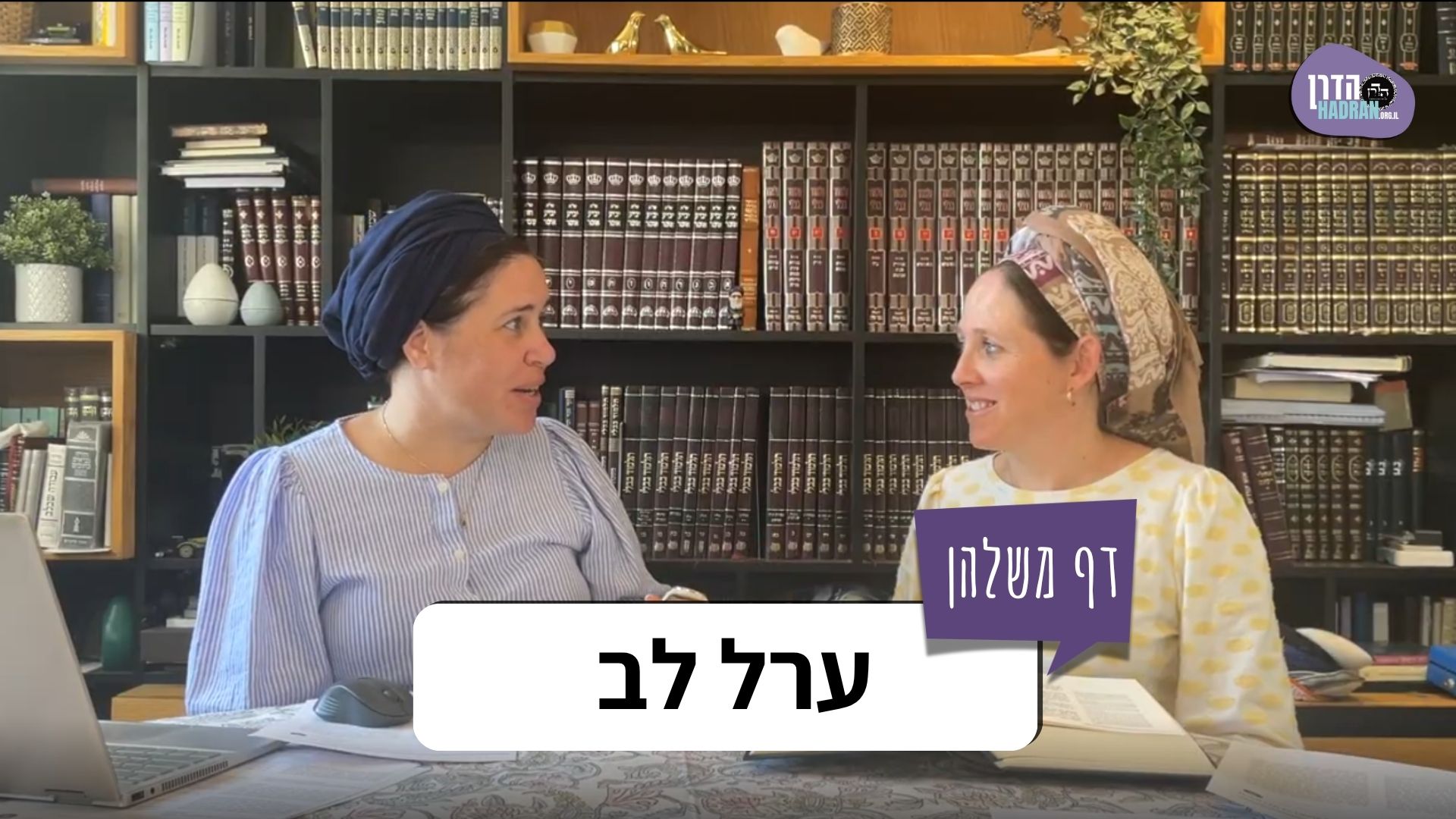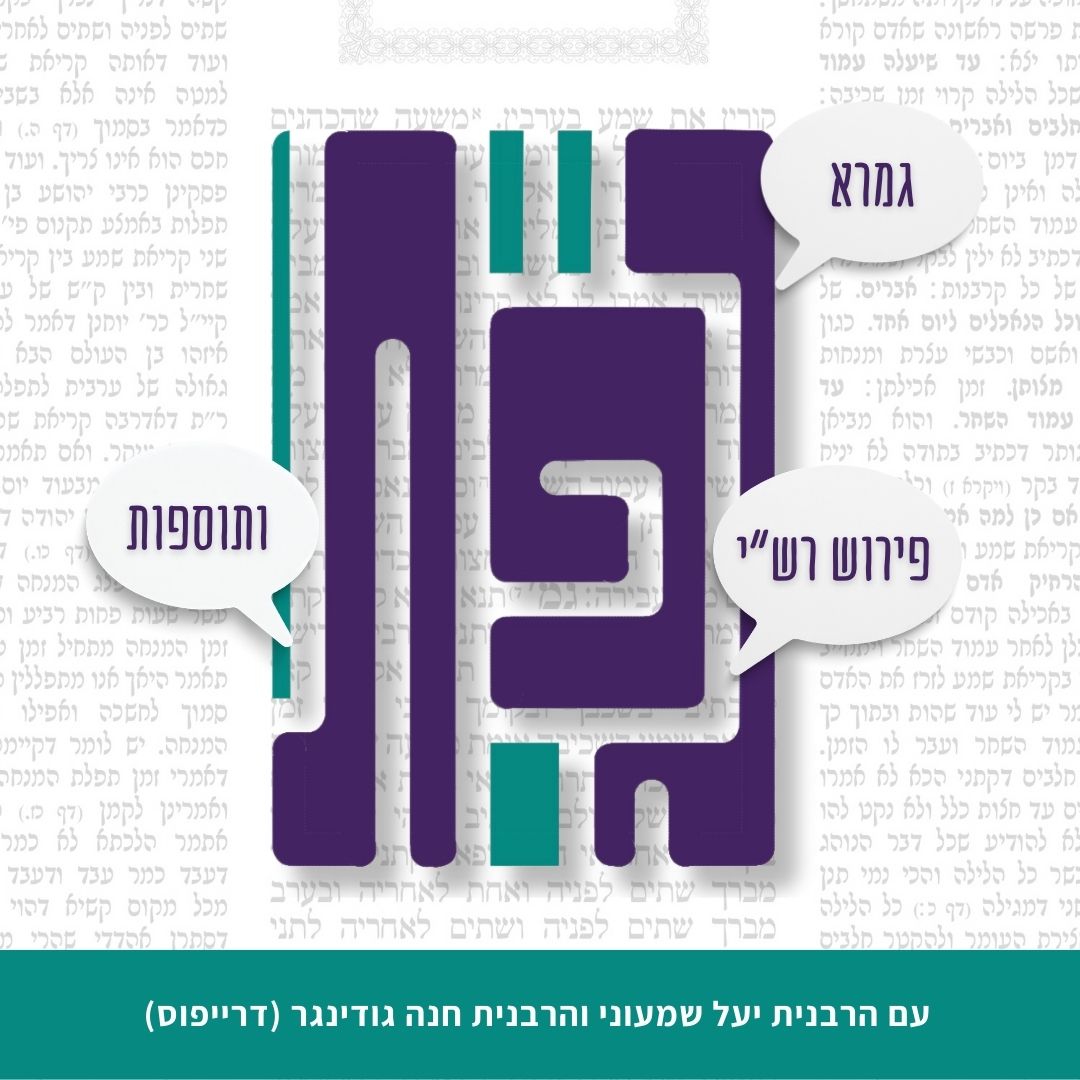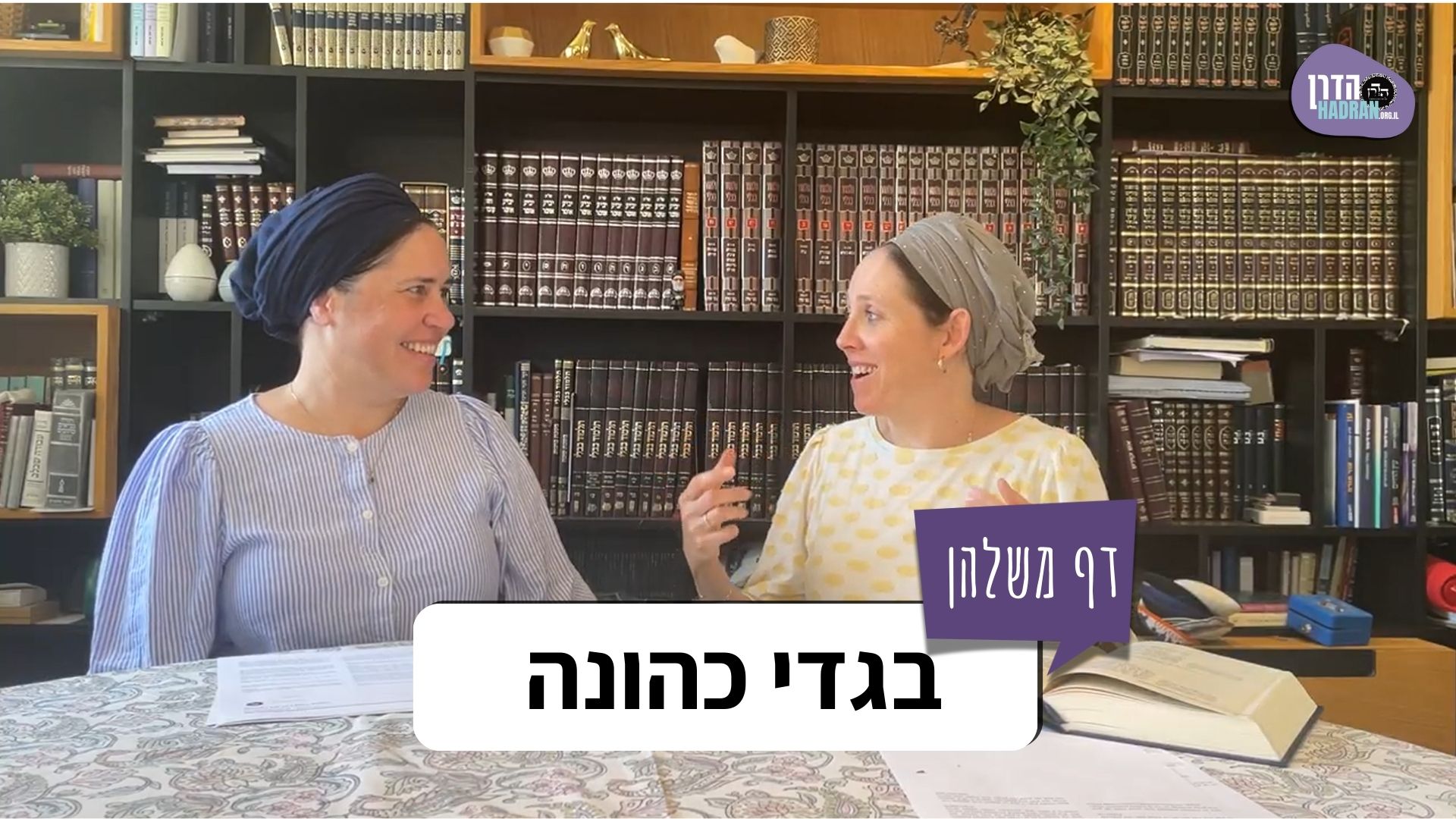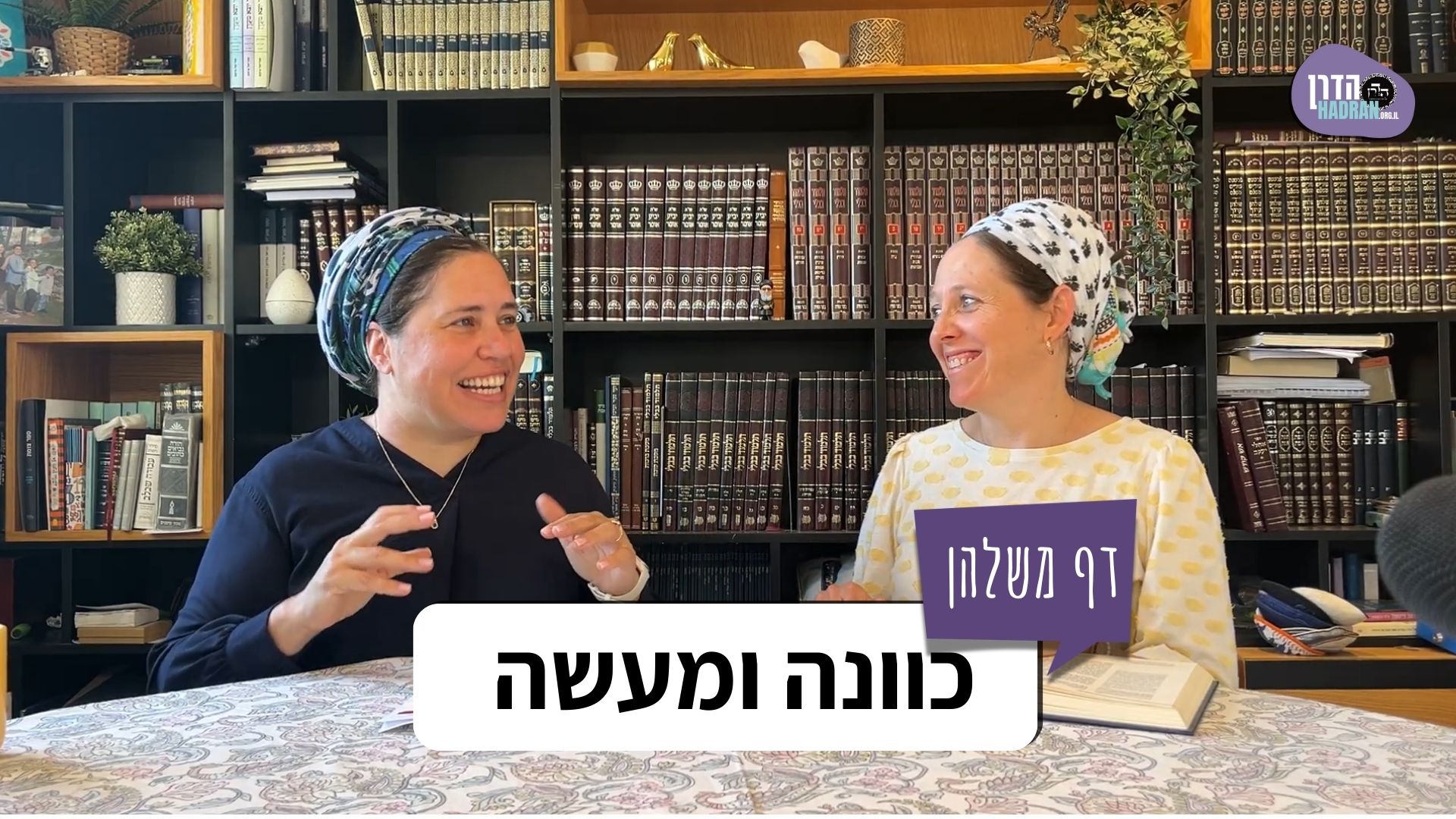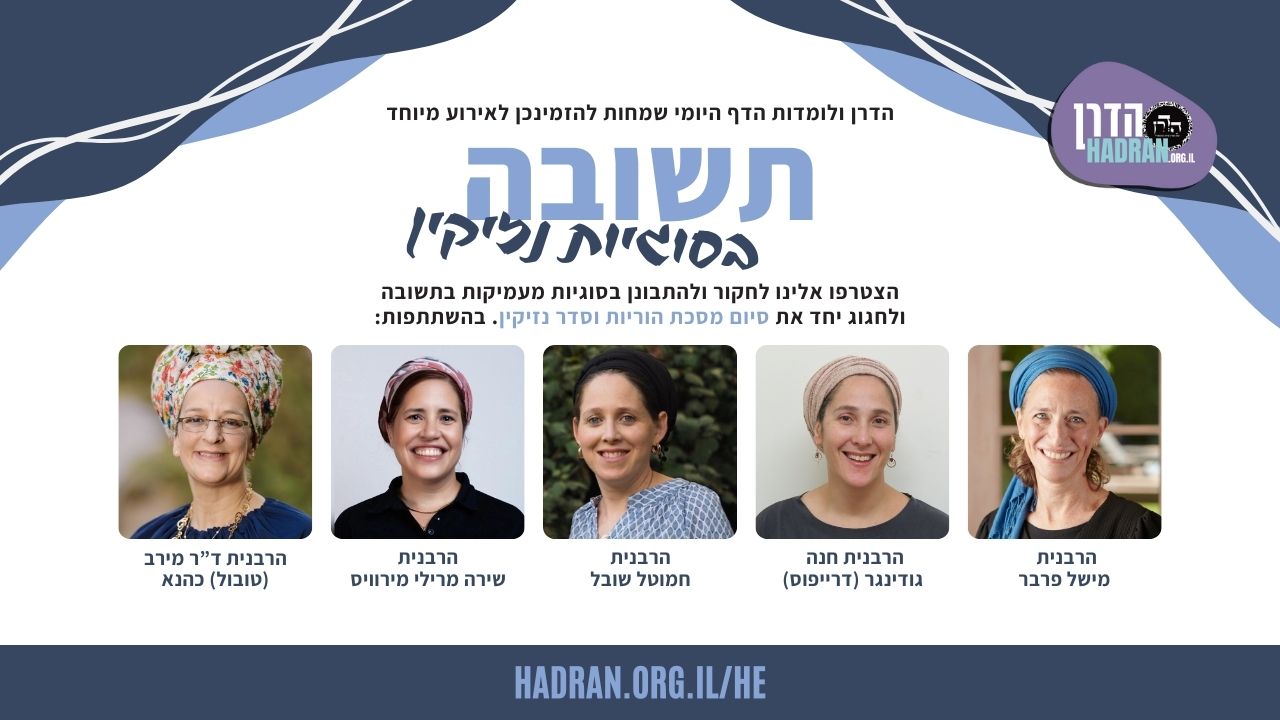בבא בתרא סב
וְאִי אֲמַר לֵיה:ּ ״נִכְסֵי״ – אֲפִילּוּ בָּתֵּי וְעַבְדֵי.
And if he said to him: I am selling you my property, it means that he is selling him even his houses and his Canaanite slaves.
מָצַר לוֹ מֶצֶר אֶחָד אָרוֹךְ וּמֶצֶר אֶחָד קָצָר – אָמַר רַב: לֹא קָנָה אֶלָּא כְּנֶגֶד הַקָּצָר.
§ The Gemara continues its examination of the concept of delineating boundaries in a wide manner, and considers the following case: If in the bill of sale the seller delineated one boundary line on one side of the field long, and the other boundary line on the opposite side of the field he delineated short, Rav said: The buyer acquires only a width of land corresponding to the short border, as it is assumed that the short boundary line delineates the actual size of the field that was sold to him, while the long boundary line was merely intended to point to the field under discussion. That is to say, the seller delineated the boundaries in a broad manner, but did not intend to include everything found within those boundaries in the sale.
אֲמַרוּ לֵיהּ רַב כָּהֲנָא וְרַב אַסִּי לְרַב: וְיִקְנֶה כְּנֶגֶד רֹאשׁ תּוֹר! שְׁתֵיק רַב.
Rav Kahana and Rav Asi said to Rav: But let him also acquire the triangular plot [rosh tor] bounded by the diagonal line connecting the end of the short border and the end of the long border. Rav was silent and did not respond.
וּמוֹדֶה רַב, הֵיכָא דְּאִיכָּא מֶצֶר רְאוּבֵן וְשִׁמְעוֹן מֵחַד גִּיסָא, וּמֶצֶר לֵוִי וִיהוּדָה מֵחַד גִּיסָא; מִדַּהֲוָה לֵיהּ לְמִכְתַּב לֵיהּ דִּרְאוּבֵן כְּנֶגֶד לֵוִי וּדְשִׁמְעוֹן כְּנֶגֶד יְהוּדָה, וְלָא כְּתַב לֵיהּ; שְׁמַע מִינַּהּ כְּנֶגֶד רֹאשׁ תּוֹר הוּא דַּאֲמַר לֵיהּ.
And Rav concedes that where there is a boundary line defined by the fields of Reuven and Shimon on one side of the field being sold, and a boundary line defined by the fields of Levi and Yehuda on the other side, and in the bill of sale the seller describes the field being sold as bordered by the fields of Reuven and Shimon on one side but mentions only the field of Levi on the other side, since had he intended to sell only half the field he should have written for the buyer in the bill of sale that the field is bordered by the field of Reuven on the one side, which is opposite that of Levi on the other, or by the field of Shimon on the one side, which is opposite that of Yehuda on the other, but he did not write that for him, one can conclude from it that he is telling him that he is selling him not only the area between the fields of Reuven and Levi, but also the triangular plot bounded by the diagonal line connecting the end of Shimon’s field to the end of Levi’s field.
מֶצֶר רְאוּבֵן מִזְרָח וּמַעֲרָב, וּמֶצֶר שִׁמְעוֹן צָפוֹן וְדָרוֹם – צְרִיךְ לְמִכְתַּב לֵיהּ: ״מֶצֶר רְאוּבֵן רוּחִין תְּרֵין, וּמֶצֶר שִׁמְעוֹן רוּחִין תְּרֵין״.
The Gemara continues: If the field being sold is bounded by the fields of Reuven on the east and the west, and it is bounded by the fields of Shimon on the north and the south, it is not enough to designate the field for the buyer as the field between the fields of Reuven and Shimon, but it is necessary to write for him in the bill of sale that the field is bounded by the fields of Reuven on two sides, and it is bounded by the fields of Shimon on two sides. Otherwise, all that the buyer acquires is a triangular plot bounded by one of Reuven’s fields and one of Shimon’s fields, and the boundary is the diagonal line connecting the end of Reuven’s field to the end of Shimon’s field.
אִיבַּעְיָא לְהוּ: סִיֵּים לוֹ אֶת הַקְּרָנוֹת, מַהוּ? כְּמִין גַּאם, מַהוּ?
A dilemma was raised before the Sages: If the seller defined for the buyer only the corners of the field being sold, what is the halakha? Does this mean that he is selling him only the corners of the field or the entire field marked by those corners? A second dilemma was also raised: If he defined the boundaries of the field in a shape resembling the Greek letter gamma [gam], or the English letter L, noting the boundaries on two adjacent sides that meet at a right angle, what is the halakha? Does this mean that he is selling him the entire field, or only the triangular plot marked by those boundaries and the diagonal line running from the end of one to the end of the other?
בְּסֵירוּגִין, מַהוּ? תֵּיקוּ.
A third dilemma was also raised before the Sages: If the seller defined the boundaries of the property he is selling in an alternating fashion, mentioning only some of the fields bordering each side of the field being sold, while omitting others, what is the halakha? No resolution was found for these questions, and these dilemmas shall stand unresolved.
מָצַר לוֹ מֶצֶר רִאשׁוֹן וּמֶצֶר שֵׁנִי וּמֶצֶר שְׁלִישִׁי, וּמֶצֶר רְבִיעִי לֹא מָצַר לוֹ – אָמַר רַב: קָנָה הַכֹּל, חוּץ מִמֶּצֶר רְבִיעִי. וּשְׁמוּאֵל אָמַר: אֲפִילּוּ מֶצֶר רְבִיעִי. וְרַב אַסִּי אָמַר: לֹא קָנָה אֶלָּא תֶּלֶם אֶחָד עַל פְּנֵי כּוּלָּהּ –
§ The Gemara raises a similar dilemma. If, in the bill of sale, the seller delineated for the buyer the field’s first boundary, its second boundary, and its third boundary, but he did not delineate its fourth boundary at all, Rav says: The buyer acquires the entire field, except for the one furrow along which the fourth boundary runs, which is usually differentiated in some way from the field itself. And Shmuel says: The buyer acquires even the furrow along which the fourth boundary runs. And Rav Asi says: He acquires only the width of one furrow along the entire perimeter of the three boundaries specified by the seller.
סָבַר לַהּ כְּרַב, דְּאָמַר: שַׁיּוֹרֵי שַׁיַּיר; וּמִדְּשַׁיַּיר בְּמֶצֶר, שַׁיַּיר נָמֵי בְּכוּלְּהִי.
The Gemara explains Rav Asi’s opinion: He holds in accordance with the opinion of Rav, who said that by failing to delineate the fourth boundary, the seller withheld some part of the field, i.e., one furrow, for himself. But Rav Asi takes this further and says that since he withheld some part of the field for himself at the fourth boundary, he withheld also some portion of the entire field, and therefore the buyer acquires only that which is adjacent to the specified boundaries.
אָמַר רָבָא, הִלְכְתָא: קָנָה הַכֹּל חוּץ מִמֶּצֶר רְבִיעִי. וְלָא אֲמַרַן אֶלָּא דְּלָא מַבְלַע, אֲבָל מַבְלַע – קָנָה.
Rava said: The halakha is that the buyer acquires the entire field except for the one furrow along which the fourth boundary runs, in accordance with the opinion of Rav. And we said this only in a case where the fourth boundary is not included within the space between two adjacent boundaries, but rather juts out beyond them. But when it is included within the space delineated by the other boundaries, the buyer acquires it as well.
וְכִי לָא מַבְלַע נָמֵי לָא אֲמַרַן אֶלָּא דְּאִיכָּא עֲלֵיהּ רִיכְבָּא דְּדִיקְלָא, וְהָוֵי תִּשְׁעַת קַבִּין; אֲבָל לֵיכָּא עֲלֵיהּ רִיכְבָּא דְּדִיקְלָא, וְלָא הָוֵי תִּשְׁעַת קַבִּין – קָנָה. מִכְּלָל דְּכִי מוּבְלַע – אַף עַל גַּב דְּאִיכָּא עֲלֵיהּ רִיכְבָּא דְּדִיקְלָא, וְהָוֵי תִּשְׁעַת קַבִּין – קָנָה.
Rava adds: And even when it is not included in that space, we said that the buyer does not acquire it only in a case where there is a row of trees on it, or it is an area fit for sowing nine kav of seed. But where there is no row of trees on it, and it is not an area fit for sowing nine kav of seed, the buyer acquires it along with the rest of the field. By inference one derives from here that when the fourth border is included within the space delineated by the two adjacent boundaries, even if there is a row of trees on it and it is an area fit for sowing nine kav, the buyer acquires it.
אִיכָּא דְּאָמְרִי: אָמַר רָבָא, הִלְכְתָא: קָנָה הַכֹּל וַאֲפִילּוּ מֶצֶר רְבִיעִי. וְלָא אֲמַרַן אֶלָּא דְּמַבְלַע, אֲבָל לָא מַבְלַע – לָא קְנֵי.
There are those who say that Rava’s ruling and the conclusion drawn from it are as follows: Rava said: The halakha is that the buyer acquires the entire field, and he acquires even the furrow along which the fourth boundary runs, in accordance with the opinion of Shmuel. And we said this only in a case where the fourth boundary is included within the space delineated by the two adjacent boundaries. But when it is not included within those boundaries, the buyer does not acquire it.
וְכִי מַבְלַע נָמֵי לָא אֲמַרַן אֶלָּא דְּלֵיכָּא עֲלֵיהּ רִיכְבָּא דְּדִיקְלָא, וְלָא הָוֵי תִּשְׁעַת קַבִּין; אֲבָל אִיכָּא עֲלֵיהּ רִיכְבָּא דְּדִיקְלָא, וְהָוֵי תִּשְׁעַת קַבִּין – לֹא קָנָה. מִכְּלָל דְּכִי לָא מוּבְלָע – אַף עַל גַּב דְּלֵיכָּא עֲלֵיהּ רִיכְבָּא דְּדִיקְלָא, וְלָא הָוֵי תִּשְׁעַת קַבִּין – לָא קָנֵי.
Rava adds: And even when it is included within the adjoining boundaries, we said that the buyer acquires it only in a case where there is no row of trees on it, and it is not an area fit for sowing nine kav of seed. But where there is a row of trees on it, or it is an area fit for sowing nine kav of seed, the buyer does not acquire it. By inference one derives from here that when the fourth boundary is not included within the two adjacent boundaries, even if there is no row of trees on it and it is not an area fit for sowing nine kav of seed, the buyer does not acquire it.
שָׁמְעִינַן מִתַּרְוַיְיהוּ לִישָּׁנֵי דְּרָבָא, דִּבְשָׂדֶה לָא שַׁיַּיר וְלָא מִידֵּי. וְשָׁמְעִינַן נָמֵי, דְּהֵיכָא דְּמַבְלַע, וְלֵיכָּא עֲלֵיהּ רִיכְבָּא דְּדִיקְלָא, וְלָא הָוֵי תִּשְׁעַת קַבִּין – קָנָה. לָא מַבְלַע, וְאִיכָּא עֲלֵיהּ רִיכְבָּא דְּדִיקְלָא, וְהָוֵי תִּשְׁעַת קַבִּין – לֹא קָנָה.
We conclude according to both versions of the statement of Rava that even if the seller withheld something for himself along the fourth boundary, he did not withhold anything at all in the field itself. And we also conclude according to both versions that where the fourth boundary is included within the space defined by the two adjacent boundaries, and there is no row of trees on it and it is not an area fit for sowing nine kav of seed, the buyer acquires it. And furthermore, we conclude according to both versions that if the fourth boundary is not included within the two adjacent boundaries, and there is a row of trees on it, or it is an area fit for sowing nine kav of seed, the buyer does not acquire it.
מַבְלַע וְאִיכָּא עֲלֵיהּ; לָא מַבְלַע וְלֵיכָּא עֲלֵיהּ – אִתְּמַר לַהּ לְהַאי גִּיסָא, וְאִתְּמַר לַהּ לְהַאי גִּיסָא. שׁוּדָא דְּדַיָּינֵי.
If the fourth boundary is included within the two adjacent boundaries, and there is a row of trees on it or it is fit for sowing nine kav of seed, or if the fourth boundary is not included within the two adjacent boundaries, and there is no row of trees on it nor is it fit for sowing nine kav, the ruling in these cases was stated in this direction, that the land adjacent to the fourth boundary is acquired by the buyer, and it was stated in that direction, that this land is not acquired by the buyer, depending upon which version of Rava’s statement is accepted. Since there is no clear ruling in these cases, the decision is left to the discretion of the judges, who must rule in accordance with what appears to them to be the intention of the seller.
אָמַר רַבָּה: ״פַּלְגָא דְּאִית לִי בְּאַרְעָא״ – פַּלְגָא. ״פַּלְגָא בְּאַרְעָא דְּאִית לִי״ – רִיבְעָא. אֲמַר לֵיהּ אַבָּיֵי: מַאי שְׁנָא הָכִי וּמַאי שְׁנָא הָכִי? אִישְׁתִּיק.
§ Rabba said: If one owns a field in partnership with another, and he says to a third person: I am selling you the half that I have in this land, he means to sell him half of that field, i.e., his entire share. If he says to the buyer: I am selling you half of the land that I have, he means to sell him one-quarter of that field, i.e., half of his share. Abaye said to him: What is different about this wording and what is different about that wording, that you rule differently in the two cases? Rabba was silent, offering no reply.
אָמַר אַבָּיֵי, אֲנָא סָבְרִי: מִדְּאִישְׁתִּיק – קַבּוֹלֵי קַבְּלַהּ. וְלָא הִיא; חָזֵינָא הָנְהוּ שְׁטָרֵי דְּנָפְקִי מִבֵּי מָר, וּכְתִיב בְּהוּ הָכִי: ״פַּלְגָא דְּאִית לִי בְּאַרְעָא״ – פַּלְגָא, ״פַּלְגָא בְּאַרְעָא דְּאִית לִי״ – רִיבְעָא.
Abaye said: I had assumed that since he was silent, he must have accepted my opinion and retracted his statement; but that is not so. As on another occasion I saw certain bills of sale that issued from my Master’s house, that is, they were issued under the auspices of my master Rabba, in which it was written: The half that I have in this land, and it was clear from another clause in the bill that half of the field was being sold. And there was another bill of sale in which it was written: Half of the land that I have, and it was clear from another clause in the bill that one-quarter of the field was being sold.
וְאָמַר רַבָּה: ״מֶצֶר אַרְעָא דְּמִינַּהּ פַּלְגָא״ – פַּלְגָא. ״מֶצֶר אַרְעָא דְּמִינַּהּ פְּסִיקָא״ – תִּשְׁעָה קַבִּין.
And Rabba also said: If one sold land to another and delineated boundaries on three sides of the field, and with regard to the fourth side he wrote in the bill of sale: The boundary of the field is the land through which the field is halved, he has sold him half of the field. If he writes with regard to the fourth boundary: The boundary of the field is the land from which a plot can be set apart, he has sold him only an area fit for sowing nine kav of seed, as that is the minimum size of a plot of land defined as a field.
אֲמַר לֵיהּ אַבָּיֵי: מַאי שְׁנָא הָכִי וּמַאי שְׁנָא הָכִי? אִישְׁתִּיק. סְבוּר מִינָּה, אִידֵּי וְאִידֵּי פַּלְגָא;
Abaye said to him: What is different about this wording, and what is different about that wording, that you rule differently in the two cases? Rabba was silent, and did not respond. The Sages understood from this silence that Abaye understood that Rabba retracted his ruling and conceded that in both this case and that case, the buyer acquires half of the field.




